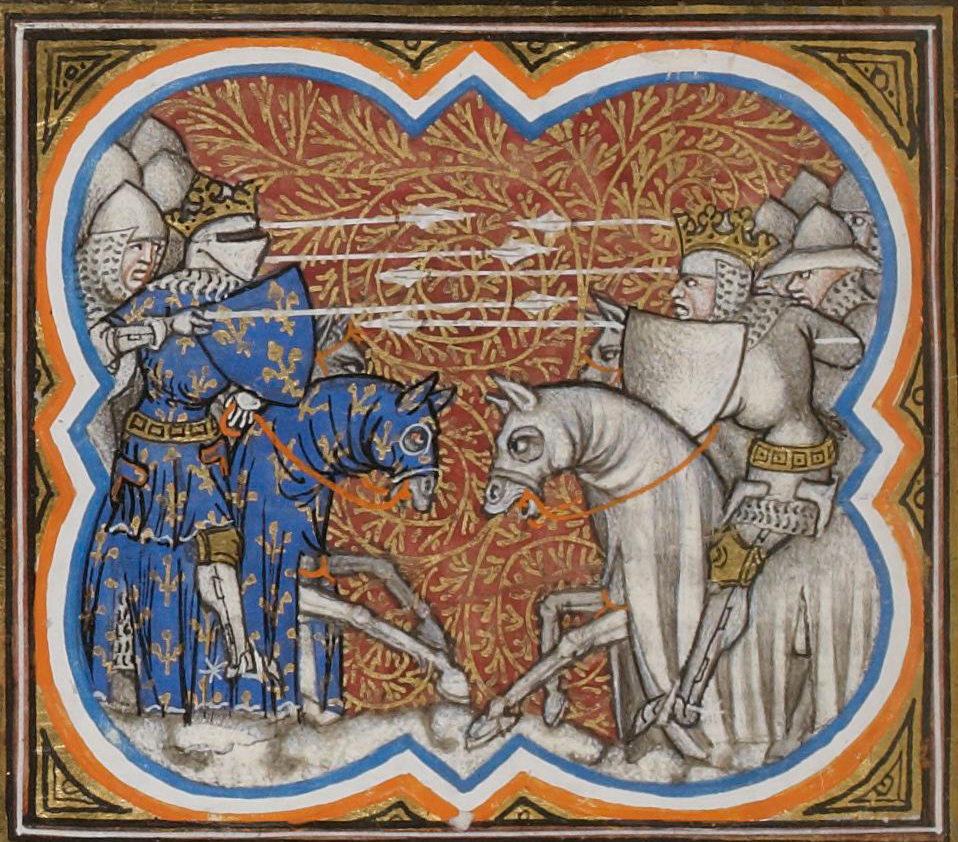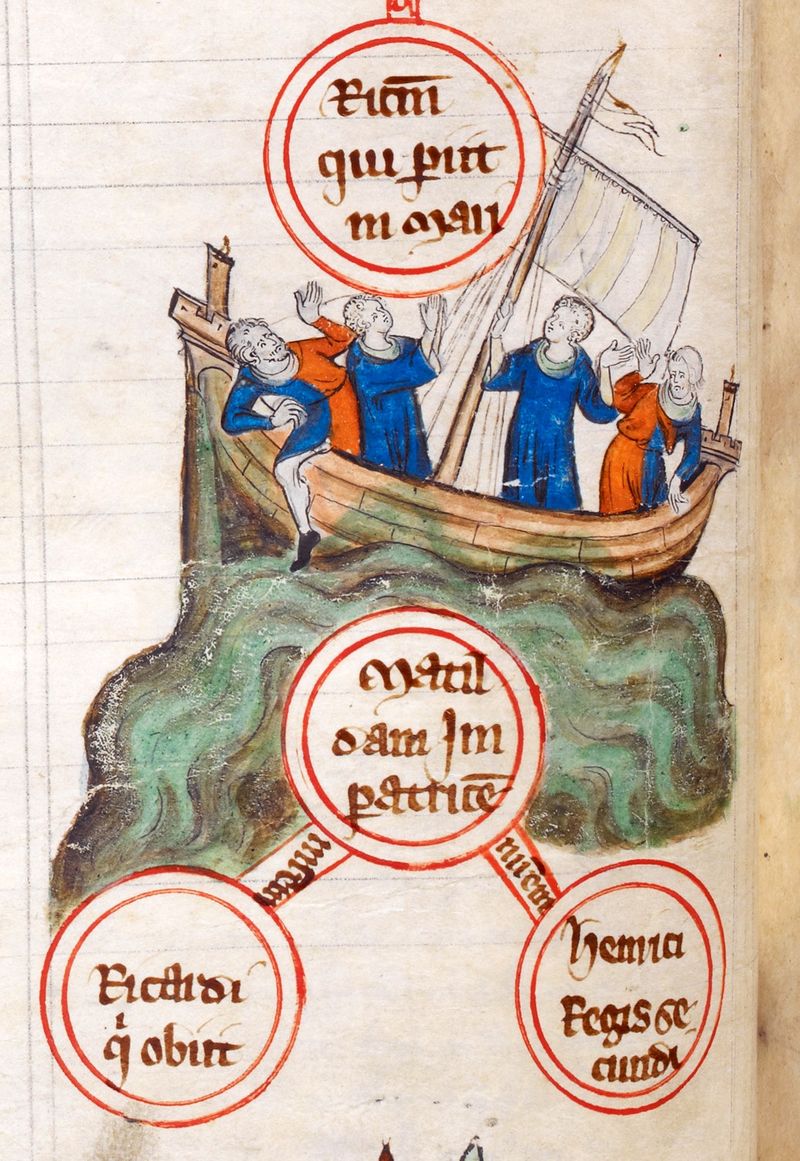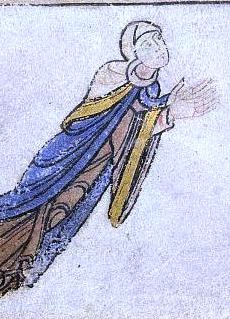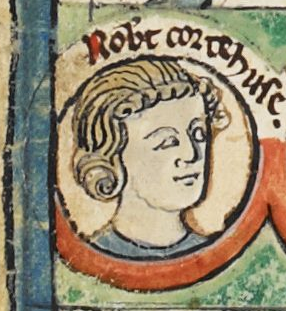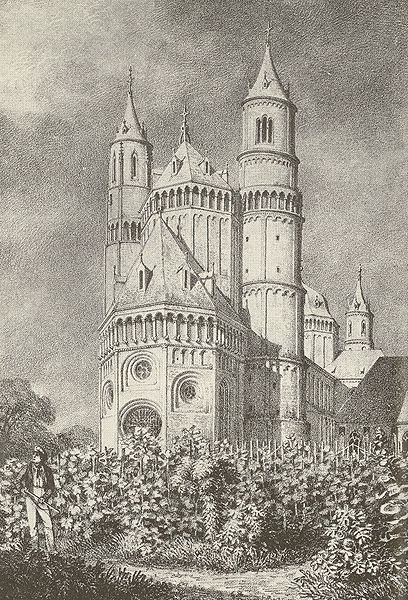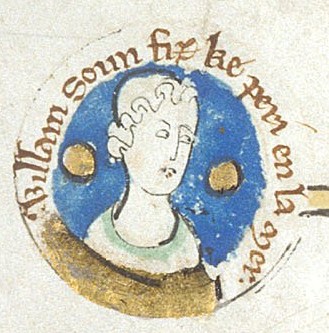 |
| Count Fulk's seal |
Henry began
to formally look for a new husband for Matilda in early 1127 and received
various offers from princes within the Empire. In 1128 Matilda was
wed to the handsome fifteen year old son Geoffrey, son of Fulk of Anjou. Henry was
still intensely interested in the power of the Counts of Anjou and desperate to
offset William Clito’s standing.
Fulk was
turning his eye east towards Jerusalem, where Fulk had interests. He had joined the Knights Templar in 1119/20 when on crusade and had remarried to Melisande, the daughter of Baldwin II, the King of Jerusalem. Fulk had already abdicated his
County of Anjou in Geoffrey’s favour.
 |
| Le Mans cathedral |
The marriage
between Matilda and Geoffrey took place on 17th June 1128 in Le Mans cathedral.
Geoffrey was knighted by his future father-in-law the week before the wedding.
‘The king sent his daughter into Normandy, ordering her to be betrothed, by
the archbishop of Rouen, to the son of Fulco aforesaid, a youth of high
nobility and noted courage. Nor did he himself delay setting sail for Normandy,
for the purpose of uniting them in wedlock.’[i]
Matilda was
eleven years senior to her new husband and the marriage was very unhappy.
Matters were not aided by the fact that Matilda insisted on speaking only
German while Geoffrey spoke French.
Domestic Matters
There was
much mutterings about the royal marriage, with a number of the nobility and
churchmen claiming that the marriage relieved them of their oath over the succession,
as recorded by William of Malmesbury;
‘All declared prophetically, as it were, that, after his death, they would
break their plighted oath. I have frequently heard Roger, bishop of Salisbury,
say, that he was freed from the oath he had taken to the empress: for that he
had sworn conditionally, that the king should not marry his daughter to any one
out of the kingdom without his consent, or that of the rest of the nobility.’[ii]
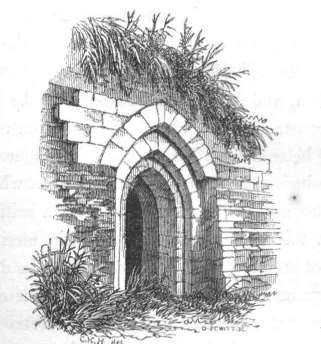 |
| Postern gate of Northampton Castle |
At one point
early on in the marriage Matilda left Geoffrey, returning to her father’s court
in Rouen while Geoffrey announced his determination to go on
pilgrimage to the shrine of St James at Santiago di Compostela. Henry appears to have blamed
Geoffrey for the separation, but Henry summoned Matilda from Normandy, and she
arrived in England that August.
A meeting of
the King's great council was called by Henry; the council met at Northampton castle on
8th September 1129. It was decided that Matilda would return to
Geoffrey; Henry must have been loath to lose this new alliance. The council
also gave another collective oath of allegiance to recognise Matilda as Henry's
heir. This action seems to have caused a turning point for Matilda who
henceforth supported her husband against her father.
On 5th
March 1133 the Matilda gave birth at Le Mans to the couple’s first son Henry[iii]. They were to have three children,
the second child Geoffrey[iv] was born on 11th June
1134 at Rouen, a difficult birth during which Matilda nearly died. King Henry
was at his daughter’s bedside as she ordered the arrangements for her bequests
and burial in the abbey of Bec[v].
Death of a King
 |
| Henry I |
In the
autumn of 1135 King Henry arrived at his castle in Lyons-la Fôret for the purpose of hunting. He was
68; William of Malmesbury claims the king fell sick during the hunt, Henry of Huntingdon claimed that Henry was heartsick
that his daughter supported her husband over her father over the issue of her
dowry, a number of castles in Normandy. Henry refused to hand over control of
the castles to Geoffrey causing a rift between the two courts[vi].
Orderic claims Henry became sick the night
before and then generally worsened over the next few days. Henry authorised his
bastard son Robert of Gloucester to take £60,000 to pay the soldiers and
servants and gave instructions that he was to be buried at the Abbey[vii] at Reading. When queried about his successor Henry;
‘Assigned all lands on both
sides of the sea to his daughter in lawful and lasting succession.’[viii]
 |
| Donjon of Argentan |
Henry was still
apparently ‘somewhat angry’ with
Geoffrey, who failed to pay him sufficient respect.
Whatever the
cause, on 1st December Henry died leaving his daughter the Countess
of Anjou as his nominated heir. Matilda immediately rode north to seize the
border castles of Domfront, Exmes and Argentan. Geoffrey was unable to come to her
aid as he was detained by a rebellion in Anjou and while Matilda was again
pregnant. She established herself in the chateau at Argentan where she gave
birth to her third child William, born on 22nd July 1136
The Race for the Crown
A
significant number of those who swore to support Matilda as ruler of the realm
switched allegiance when another contender for the throne arose. Matilda’s
cousin Stephen laid claim to the throne for himself, foreswearing the oath he
had made seven years before. Stephen had been of use to his uncle on the
diplomatic and military stage of northern France for some years.
Now Stephen
quickly made peace and came to terms with Henry’s greatest enemy William Clito
and. He was well-known to those of import in both England and Normandy, whereas
his cousin Matilda had lived most of her life in either Germany or now Anjou.
 |
| Westminster Abbey (L) |
It was all
to be decided at the end of the day by a question of who would be first to be
crowned monarch of England, Stephen[ix] or his cousin Matilda,
who may have been impeded by her pregnancy from making the cross channel dash .
Stephen received the news of his uncle’s death when he was in Boulogne and by
the 5th December he had crossed the channel to England and was
crowned king on 22nd December at Westminster Abbey;
‘Stephen, count of Boulogne,
having been chosen by the nobles of the kingdom, with the sanction of the
clergy and people, was crowned king in London on Christmas Day[x],
by William, archbishop of Canterbury.’[xi]
Once he’d
been acclaimed king in London Stephen travelled post haste to Winchester, the administrative centre of the kingdom. He also stood in
Matilda’s place as chief mourner at Henry’s lavish funeral.
Tied up in Knots
In contrast
with Matilda’s prickly mien, Stephen was an affable man who got on with people;
not a failing Matilda ever suffered from. He also benefitted from a public backlash
against Henry’s harsh governance. Stephen promised to revert to the laws of good king Edward. It was Stephen’s own affability
that tied him into knots; he had to promise much to his supporters. The
Londoners agreed to support him as long as he brought peace to the land, a
promise Stephen would find hard to keep.
 |
| Henry of Blois |
Stephen was
also supported by the church in the person of his brother Henry of Blois[xii] who Stephen described as being the
person;
‘On whom his enterprise
entirely depended…..[without whom] all his efforts would have been in vain.’[xiii]
The
Justiciar Roger of Salisbury proffered the support of the administration and
handed over the keys to the treasury. Roger of Salisbury wanted the status quo
to continue and Stephen promised this.
 |
| Pope Innocent II (L) |
Stephen also
pledged to the Archbishop of Canterbury that he would restore the freedoms of
the church and restoration of all church property lost since 1087, fifty years
previously. This had the beneficial result that, at a council in Oxford[xiv] in April 1136, Stephen was able to
announce that Pope
Innocent II had recognised him as King of England and Duke of Normandy.
Henry of
Blois was an ambitious man who was eager to re-establish the pre-eminence of
the church. In coalition with Roger of Salisbury the pair had the great offices
of the state sewn up, not to mention huge estates and castles. Stephen on the
other hand was being pushed by his barons, to whom he owed much, to not give
way to his brother’s more extreme ambitions.
Bibliography
The Feudal
Kingdom of England 1042-1216 – Frank Barlow, Pearson Education Ltd 1999
Stephen and
Matilda – Jim Bradbury, The History Press 2005
She Wolves –
Helen Castor, Faber and Faber 2010
Early
Medieval England – MT Clanchy, Folio Society 1997
Henry I – C
Warren Hollister, Yale University Press, 2003
The
Plantagenets – Dan Jones, William Collins 2013
King Stephen
– Edmund King, Yale University Press 2010
Doomsday to
Magna Carta – AL Poole, Oxford University Press 1987
At the Edge
of the World – Simon Schama, BBC 2002
Early
Medieval England – Christopher Tyerman, Stackpole Books 1996
Henry II –
WL Warren, Yale University Press 2000
www.wikipedia.en
[ii] Ibid
[iii] At the Palais des Comtes du Maine
[vi]
Failure to hand over the castles before his death was to impede Matilda’s cause
[viii]
Henry I - Hollister
[x]
Richard of Hexham,
Stephen’s chronicler, appears to have got the date wrong in his De Gestis Regis Stephani et de Bello
Standardii
[xi]
King Stephen - King
[xii]
Also known as Henry of Winchester
[xiii]
King Stephen - Henry
[xiv]
Three years later Geoffrey
of Monmouth was to start writing his Historia Regum
Brittanniae in the city

